As summer winds down, the populations of caterpillars seem to be on the rise. Some are the larvae of butterflies, but most are moths. Let’s look closer and meet some interesting caterpillars in the garden.
All caterpillars have a similar lifecycle—egg, larva, pupa, adult. Caterpillars are near the bottom of the food chain, providing protein-rich nourishment to many birds, bees, bats, frogs, snakes, toads, and small mammals. There are about 11,000 species of moths in North America, and many are important pollinators. The larvae of a few just eat dead leaves but most like the lush green ones better. If you are finding the leaves on some of your plants are suddenly being eaten, look closely for a caterpillar!
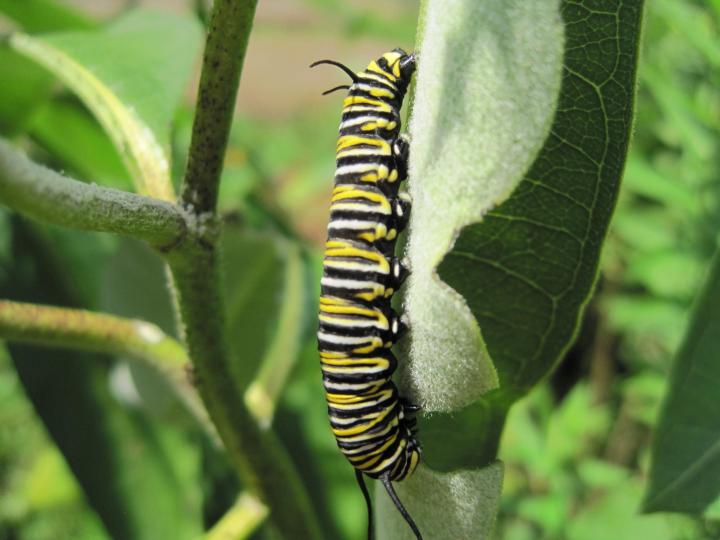
We have had a bumper crop of monarch caterpillars on the milkweed this year and find chrysalises in the strangest places. The newly emerging butterflies are generally the only hint that a chrysalis has been hiding among the basil plants, attached to an eggplant leaf, or dangling from a plant support.
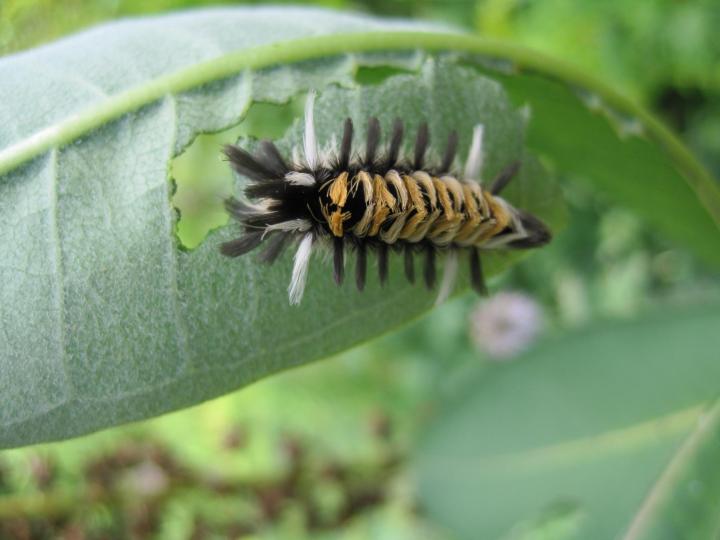
Like the monarch caterpillars, the larva of the milkweed tussock moth, also called the milkweed tiger moth, eats only milkweed, which makes them poisonous to predators. It is a very hairy caterpillar with some orange and black coloring that a monarch butterfly would have. The moth it turns into, however, is not brightly colored at all, just plain brown.
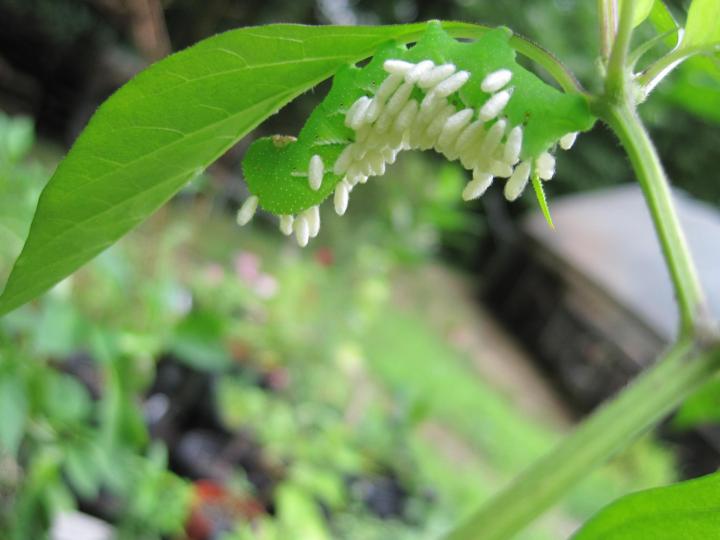
The hornworms, which are sphinx moth larvae, will pop up on the tomato and pepper plants. They are so well-camouflaged that I don’t usually notice them until much foliage has disappeared. Let it be if you find one with white cocoons on its back. A braconid wasp has laid its eggs on the fat, juicy caterpillar, and when those larvae hatch, they will eat the caterpillar from the inside out. Tiny braconid wasps are beneficial insects you want to have in your garden.
See how to deal with tomato hornworms!
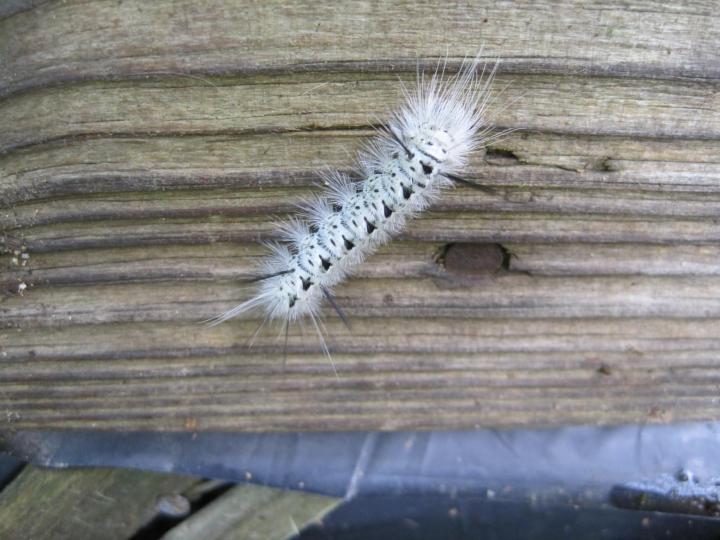
The hairy, white, hickory tussock caterpillar likes tree leaves, including hickory, oak, maple, and ash. This is one furry critter you don’t want to pet. It has barbed hairs that are toxic and can cause a nasty rash. After pupating, it will turn into a brown and white moth.
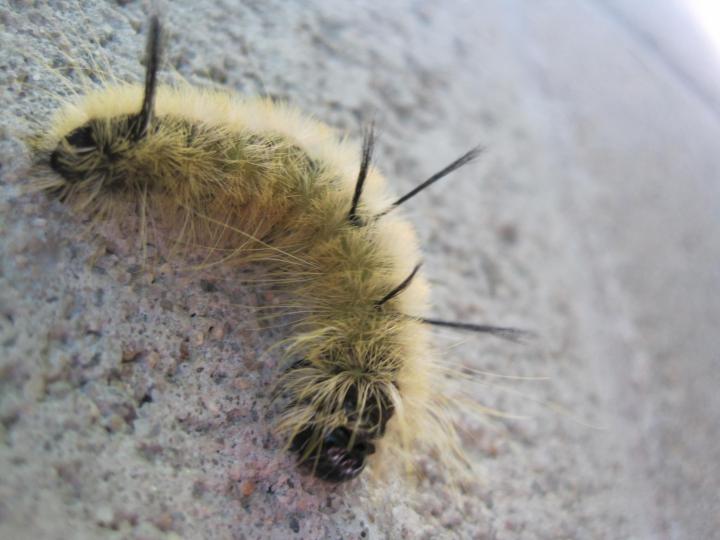
The dagger moth larva is another hairy white caterpillar that you should avoid touching. It has five long black spikes of hair, sometimes called pencils—two pairs near the head and a single one at the rear and can cause a rash if handled. It eats tree leaves such as oak, maple, birch, and ash. After pupating, it will emerge as a drab gray and white moth.

The oddest caterpillar I have found so far this summer is the larva of the tiger swallowtail butterfly. It is smooth and green with blue dots. The googly eyes are fake, just there to scare away predators. It also has a stinky organ near the head called an osmeteria that it pops out to ward off threatening critters. It also eats tree leaves: cherry, apple, and ash, which are its favorites.

The fall webworms are back. They make their nests at the tips of the branches and feed only on the leaves within the nest. They expand the nest to include more leaves to chew on as they eat. Eventually, a small nest becomes a huge, ugly mass of crawling caterpillars and their droppings. They prefer apple, cherry, birch, oak, ash, and willow trees, but lilacs, roses, and other ornamentals can also prey on their voracious munching. Since they feed for a month or more, a severe webworm infestation can easily defoliate a small tree. They overwinter in the soil as a pupa and emerge as a small white moth in late spring.
I am still looking for a wooly bear caterpillar, the larvae of the Isabella moth. They like to eat plantain and dandelions; no harm is done there. The black and brown wooly bear has long been used to predict the harshness of the coming winter. According to folklore, the wider the brown band in the middle, the milder the winter will be. Read all about the Woolly Bear Caterpillar and Weather Prediction!
Interested in butterflies? Learn about butterfly gardening and plants that attract butterflies.


















